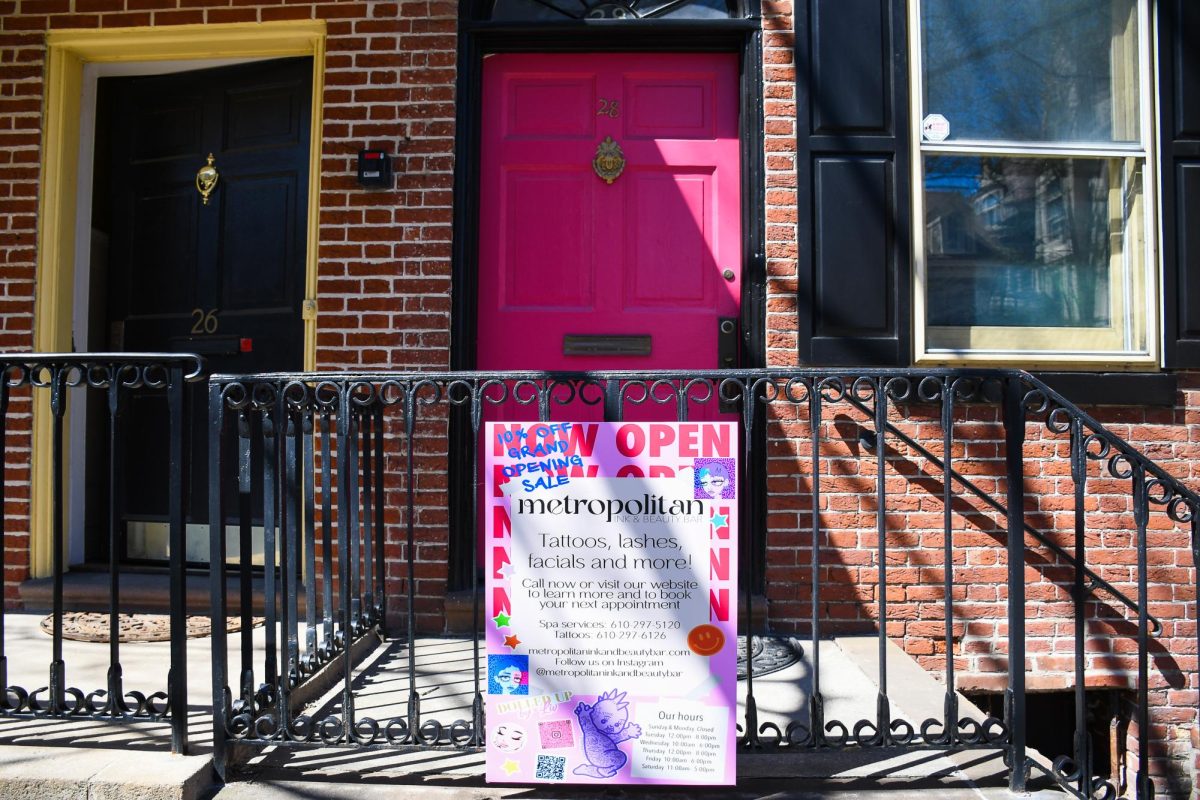Marquis renovations transform eatery
Marquis renovations transform dining facility into dining destination
Students returning to campus this semester were greeted by a long-awaited total overhaul to Marquis Dining Hall that included a crepe station and more varied seating.
The renovations, which took a total of 12 weeks during the summer, included an expansion to both the dining and the serving area and cost in total approximately $1.6 million, according to Associate Vice President of Finance & Business Affairs Stephen Schafer.
“We hope that the renovation provides more options for both dining and gathering in a space that is brighter, airier and more accessible,” Director of Facilities Planning and Construction Mary Wilford-Hunt wrote in an email. She wrote that the layout of the dining hall was enhanced to provide more seating for students, in a way that “encourages student interaction while dining.”
An expanded gluten-free section is one of the adjustments to dining options for students. Crepes, once popular in Lower Farinon but absent from campus for a year, were reestablished in Marquis.
Many of the changes were the result of discussions between students, faculty and administration, according to Dining Services Marketing Coordinator Kymberly Bydlon.
“When our Campus Executive Chef and Director of Operations consulted with a group of Resident Assistants, they all cheered when they were informed the crepe station was coming back,” Bydlon wrote in an email.
The additions to Marquis serve as a continuation of dining service’s transition towards “destination dining,” where students congregate in specific dining halls based on elements such as unusual menu staples and the aesthetic, rather than pure convenience. The goal is that students will choose their dining options based on “that extra something special,” Bydlon said.
Bydlon said that a motivation behind “destination dining” was to ensure that students have variety in their diets, and the dining experience never becomes dull.
“Where Upper has the taqueria, Marquis now has the creperie, Simon’s has s’mores, Gilbert’s has a “Panera Bread” vibe,” she wrote.
The renovations to Marquis come a semester after the transformation of Upper and Lower dining halls. Vice President for Campus Life Annette Diorio said that one of the main reasons behind the reshaping of the dining halls was a rethinking of dining on campus.
“Two years ago, we made a decision as an institution to require meal plans for all students,” Diorio said. “That was a community decision to think about our meals as something that bring people together rather than something that is really only offered for first year students.”
Diorio also said that Lafayette’s dining service provider, Bon Appetit wanted to cook in ways that required adjustment, such as cooking on site.
“When we changed dining services providers,” she said, referring to the change from Sodexo to Bon Appetit, “we committed together to doing some renovations of the dining facilities, partially because the way our facilities were structured didn’t work well with what Bon appetite was doing with the food.”
Changes in dining options, especially at breakfast, are encouraging some students to eat in Marquis more often.
“I eat breakfast there every day. I’m a breakfast regular,” Julia DeFranco ’17 said. “I love the omelette bar and the breakfast sandwich things.”
“[The changes] are a lot better,” Selin Demirler ‘16 said, seconding DeFranco’s comments about the dining hall’s breakfast options. “I don’t have a meal-plan, but I want to get one now.”
Some students, however, note new problems, such as an inability to handle increased traffic due to this greater demand.
“I think that the changes to Marquis were disappointing,” Jack Shaw ’17 said. “It takes more time to get food and it doesn’t seem like a very efficient layout.”
In addition to new heating, air and ventilation systems, Wilford-Hunt wrote that the college also added new ramps, updated doors, signage and restrooms to make the dining facility more accommodating.
“We sought to make the facility more accessible for those with disabilities,” she wrote, noting that it complies with the American with Disabilities Act.






















































































































![The new Marquis dining hall features more space and more food options. [Photo by Hana Isihara ‘17]](https://lafayettestudentnews.com/wp-content/uploads/2015/09/Marquis_HanaIsihara17.jpg)